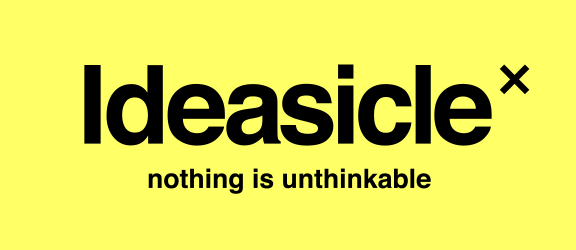Not Sure What To Do? Ask Your Brand.
Photo by Andrea Piacquadio
Sounds sorta nuts, right? To ask something as abstract and ill-defined as a “brand” a question? Preposterous, really. But perhaps it’s only preposterous because your brand is too abstract and ill-defined. When a brand idea is formed and articulated powerfully and clearly, then it becomes easy for every employee, regardless of their role, to channel that brand idea into everything they do. Here’s what I mean and why it matters.
Don’t just brand the channel, channel the brand.
If you’re just slapping your logo all over the place, you’re not really doing any branding. You’re just slapping your logo all over the place. A logo isn’t your brand. It’s just a reminder of what your brand means. But if your brand doesn’t mean anything in the first place, then it may as well be a random piece of clipart you’re slapping around (expensively).
Every brand needs a brand idea. Otherwise, your employees have nothing to channel into the work they do, and, worse, you’re left with random acts of marketing. With a powerful brand idea, it’s no longer about what YOU would do in the marketplace, it’s about what YOUR BRAND would do.
Workshop illustration.
When I give my “Channel The Brand” workshop/presentation, I end by dividing the audience into several groups of 4-6 people. Each group gets one of two brand ideas I’ve prepared in advance (see clickable mini-manifestos above). Thing is, the product itself (a bicycle) is identical in each case. Only the brand idea is different. I then ask the teams to brainstorm within their groups against the following prompts:
How would your brand name the bike?
How would your brand do a launch event for max press?
How would your brand invite consumer engagement in social media?
How would your brand handle a spokesperson? Who would it be?
What else would your brand do to promote this bike?
After 30 minutes or so, each group then presents their ideas for each prompt to the rest of the audience. Remember, the product is identical within the two different brand ideas, but it quickly becomes clear to everyone that the ideas the teams come up with are heavily influenced by the brand idea. As it should be!
The “environmental brand” was channeled into the ideas for that brand. The “health conscious brand” was channeled in the ideas for that brand.
marketing Implication: natural integration.
When there’s no brand idea, the creative teams are left trying to integrate communications through superficial means. They’ll make sure everything looks similar—typefaces, colors, photography style, etc. But will everything really be similar?
A powerful brand idea that everyone at the company channels into their work virtually guarantees that all brand expressions in the marketplace will be integrated. Sure, the look and feel should be consistent, but that’s just the beginning. As in the workshop example above, when the “environmentally conscious” brand above does social media or out-of-home or radio, it’ll reflect in some way its obsession with the environment in all those things. That’s what it “wants” to do. And that’s natural integration.
What if my brand won’t answer me?
If you ask your brand what it wants to do and it doesn’t answer you, it means you do not have a singular brand idea nor have you articulated it well enough to allow such an exercise in personification.
If your brand won’t answer you, call me. We’ll fix that.
Will Burns is the Founder & CEO of the revolutionary virtual-idea-generating company, Ideasicle X. He’s an advertising veteran from such agencies as Wieden & Kennedy, Goodby Silverstein, Arnold Worldwide, and Mullen. He was a Forbes Contributor for nine years writing about creativity in modern branding. Sign up for the Ideasicle Newsletter and never miss a post like this.


